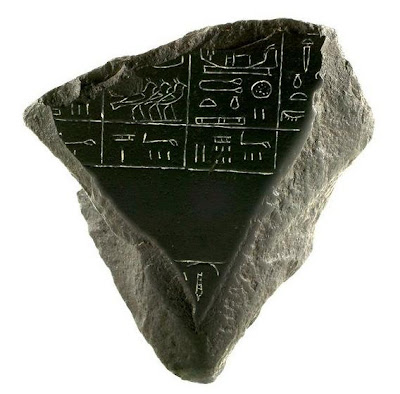STABILITA LA ORIMA DATA PROBABILE PER L'INIZIO DEI FARAONI
New work sets timeline for the first pharaohs
Archaeologists drawing on a wide range of tools said they had pinpointed the crucial time in world history when Egypt emerged as a distinct state.
Experts have wrangled for decades as to when turbulent upper and lower Egypt were brought together under a stable, single ruler for the first time.
Conventional estimates, based on the evolving styles of ceramics found in human burials, vary hugely, from 3400 to 2900 BC.
A team led by Oxford University's Michael Dee, reporting in the British journal Proceedings of the Royal Society A, widen the methods used for estimating the date.
They took radiocarbon measurements from more than 100 samples of hair, bones and plants found at burial sites and held in museum collections today.
The archaeological and radiocarbon evidence were then knitted together in a mathematical model.
It calculates the accession of King Aha -- the first of eight dynastic rulers in early Egypt -- as taking place between 3111 and 3045, with a probability of 68 percent.
This period was a critical one in world history, marking the emergence of a durable civilisation in the western hemisphere.
It occurred when people began to settle permanently on the banks of the Nile and started to grow crops, providing a surplus that spurred trade.
"The origins of Egypt began a millennium before the pyramids were built, which is why our understanding of how and why this powerful state developed is based solely on archaeological evidence," said Dee.
"This new study provides new radiocarbon-dating that resets the chronology of the first dynastic rulers of Ancient Egypt, and suggests that Egypt formed far more rapidly than was previously thought."
Aha and his seven successors ruled over a territory spanning a similar area to Egypt today, with formal borders at Aswan in the south, the Mediterranean Sea in the north and the modern-day Gaza Strip in the east, according to the study.
Source: AFP [September 04, 2013]
Experts have wrangled for decades as to when turbulent upper and lower Egypt were brought together under a stable, single ruler for the first time.
Conventional estimates, based on the evolving styles of ceramics found in human burials, vary hugely, from 3400 to 2900 BC.
A team led by Oxford University's Michael Dee, reporting in the British journal Proceedings of the Royal Society A, widen the methods used for estimating the date.
They took radiocarbon measurements from more than 100 samples of hair, bones and plants found at burial sites and held in museum collections today.
The archaeological and radiocarbon evidence were then knitted together in a mathematical model.
It calculates the accession of King Aha -- the first of eight dynastic rulers in early Egypt -- as taking place between 3111 and 3045, with a probability of 68 percent.
 |
| Fragment of the Palermo stone, known as the Royal Annals of the Old Kingdom of Ancient Egypt. It contains records of the kings of Egypt from the First Dynasty through the Fifth Dynasty [Credit: AFP] |
It occurred when people began to settle permanently on the banks of the Nile and started to grow crops, providing a surplus that spurred trade.
"The origins of Egypt began a millennium before the pyramids were built, which is why our understanding of how and why this powerful state developed is based solely on archaeological evidence," said Dee.
"This new study provides new radiocarbon-dating that resets the chronology of the first dynastic rulers of Ancient Egypt, and suggests that Egypt formed far more rapidly than was previously thought."
Aha and his seven successors ruled over a territory spanning a similar area to Egypt today, with formal borders at Aswan in the south, the Mediterranean Sea in the north and the modern-day Gaza Strip in the east, according to the study.
Source: AFP [September 04, 2013]
